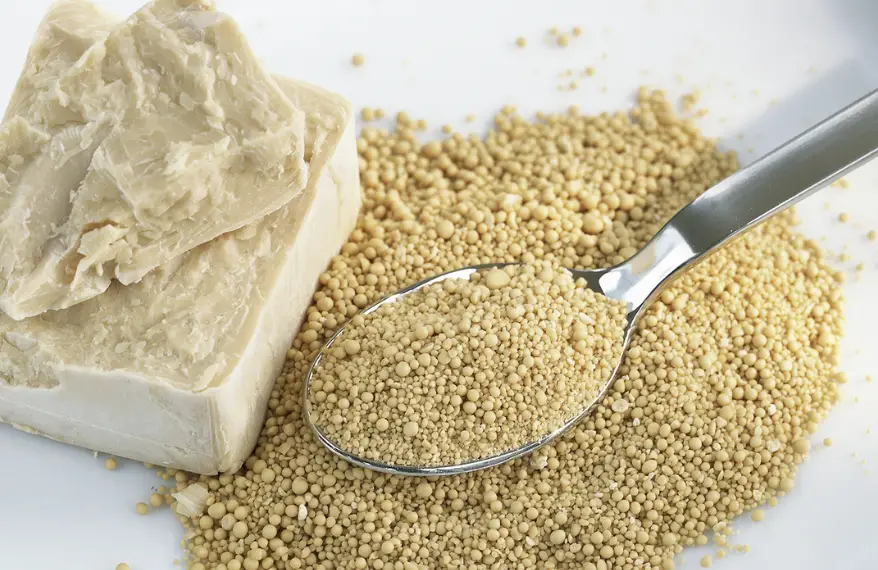
Baker’s Yeast vs. Brewer’s Yeast: Understanding the Key Differences
In the world of yeast, two varieties hold a prominent place – baker’s yeast and brewer’s yeast. Both play crucial roles in the culinary and brewing worlds, but they differ significantly in their characteristics and applications. In this blog post, we will explore the differences between baker’s yeast and brewer’s yeast, shedding light on their distinct roles and contributions in the realms of baking and brewing.
Baker’s Yeast: The Leavening Agent
Baker’s yeast, also known as Saccharomyces cerevisiae, is a single-celled fungus used primarily in baking. This versatile yeast is responsible for leavening bread and other baked goods, giving them the airy and light texture that we love.
Characteristics:
- Fermentation: Baker’s yeast ferments carbohydrates in dough, producing carbon dioxide gas that gets trapped in the gluten network. The resulting gas bubbles cause the dough to rise, creating the desired fluffy texture in baked goods.
- Temperature Sensitivity: Baker’s yeast is sensitive to temperature variations. It thrives in warm environments, typically between 75°F to 85°F (24°C to 29°C).
- Nutrient Requirements: It requires a balanced supply of sugars, water, and other nutrients to support its growth and fermentation.
Applications:
Baker’s yeast is an essential ingredient in various baked goods, including bread, pizza dough, rolls, pastries, and more. Its ability to leaven dough allows bakers to create a wide range of delectable treats with the perfect texture.
Brewer’s Yeast: The Fermentation Catalyst
Brewer’s yeast, also known as Saccharomyces pastorianus or Saccharomyces uvarum, is a different strain of yeast used primarily in the brewing of beer and other fermented beverages.
Characteristics:
- Fermentation: Brewer’s yeast converts sugars into alcohol and carbon dioxide during the beer fermentation process. It is crucial in determining the beer’s alcohol content, flavor profile, and aroma.
- Temperature Tolerance: Brewer’s yeast is more tolerant of cooler temperatures, typically between 45°F to 65°F (7°C to 18°C), depending on the specific strain.
- Nutrient Requirements: Unlike baker’s yeast, brewer’s yeast has specific nutrient requirements that affect the final characteristics of the beer, such as its body, flavor, and mouthfeel.
Applications:
Brewer’s yeast is an essential component in beer brewing. It is responsible for the fermentation process, converting sugars from malted grains into alcohol, and producing carbonation. The specific strain of brewer’s yeast used contributes significantly to the beer’s flavor, aroma, and overall profile.
Conclusion
Baker’s yeast and brewer’s yeast, though both belonging to the Saccharomyces genus, are distinct in their characteristics and applications. Baker’s yeast is the key to achieving fluffy and airy baked goods through its leavening abilities, while brewer’s yeast plays a crucial role in turning sugars into alcohol during the fermentation process in beer brewing.
As you continue your culinary and brewing adventures, understanding the differences between these two types of yeast will enable you to use them effectively in their respective domains. So, whether you’re creating the perfect loaf of bread or brewing your favorite beer, let baker’s yeast and brewer’s yeast work their magic and elevate your culinary and brewing delights. Cheers to the power of yeast and its diverse contributions in the world of food and beverages!






